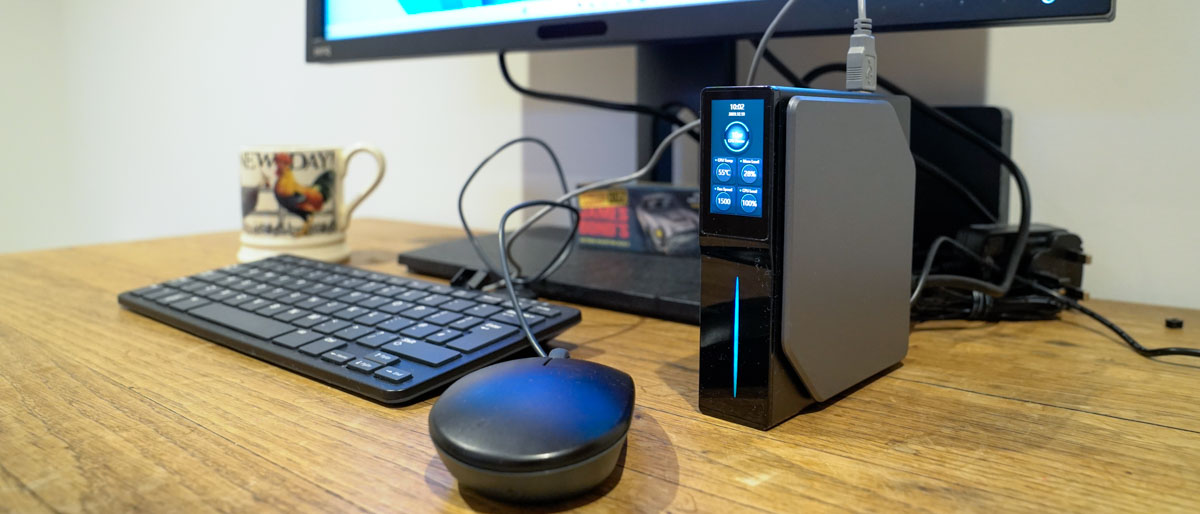
Acemagic S1: 30-second review
CPU: Intel 12th Alder Lake N95, 4 cores, 6M cache
Graphics: Intel® UHD Graphics
RAM: 16GB DDR
Storage: 512GB SSD
Rear Ports: Dual Gigabit Ethernet, Dual 4K display ports Front Ports: 1.9" TFT LCD screen (170*320 resolution), USB ports
Connectivity: WiFi 5.2, Bluetooth 5.2
Audio: Integrated audio
Camera: Not included
Size: 127mm x 122mm x 40mm
OS installed: Microsoft Windows 11 Pro (64-bit)
Accessories: Magnetic detachable casing
The Acemagic S1 nibi PC is powered by the Intel 12th Alder Lake N95 processor and positions itself as an entry-level Mini PC for home and office users. With its compact design, 16GB RAM, and 512GB SSD storage, it's tailored for day-to-day tasks and serves well as a file storage server or a soft router/firewall in a home network; there's also the option for a 1TB version.
A standout feature of the S1 is its 1.9" TFT LCD screen, which displays crucial information like CPU power, temperature, memory load, and fan speed. We've tested out loads of the best mini PCs and this is certainly an 'extra' feature. It not only adds a touch of the futuristic to the design but also provides functional real-time system monitoring, more for interest than anything else. You can also delve into the preinstalled app and tailor what is displayed depending on your needs and interests.
Performance-wise, the Alder Lake N95 processor ensures the S1 can handle multitasking and basic computing tasks with relative ease. Its benchmark scores reflect this capability, with a GeekBench CPU Single score of 1126 and a Multi score of 2514. These figures indicate that while it's not built for heavy computing, it's more than adequate for everyday applications such as web browsing, document editing, and file management.
In terms of graphics, the Intel UHD Graphics is sufficient for basic multimedia tasks but falls short when it comes to gaming or graphically intensive work. This is evident in the modest scores in Fire Strike and Time Spy benchmarks. However, this limitation is expected given its positioning as an entry-level mini PC.
The dual Gigabit Ethernet support is a significant advantage, particularly if you're looking to set up a reliable home network or require stable internet connectivity for streaming and online tasks. The S1's Wi-Fi 5.2 and Bluetooth 5.2 also ensure fast and stable wireless connections, catering to the modern demands of high-speed internet and wireless connectivity.
Design-wise, the S1 is compact and features a magnetic detachable casing, making it easy to add upgrades such as an additional SSD for storage. The option to place it vertically or horizontally adds to its versatility, making it suitable for various setups and space constraints.
Heat management in the S1 is handled well thanks to its copper pipes and bottom ventilation design. Even under a full load, the system maintains low noise levels, an essential factor for a device intended for quiet home environments.
While the S1 may not be a powerhouse gaming or creative PC, it offers a balance of performance, convenience, and versatility at an affordable price point. Its expandable SSD slot and dual LAN support make it a practical choice for a home network storage solution. The unique LCD feature adds a twist, setting it apart from typical entry-level mini PCs. Its strengths overshadow its limitations in gaming, and high-end graphics work as a reliable, everyday computing device.
Acemagic S1: Price & availability
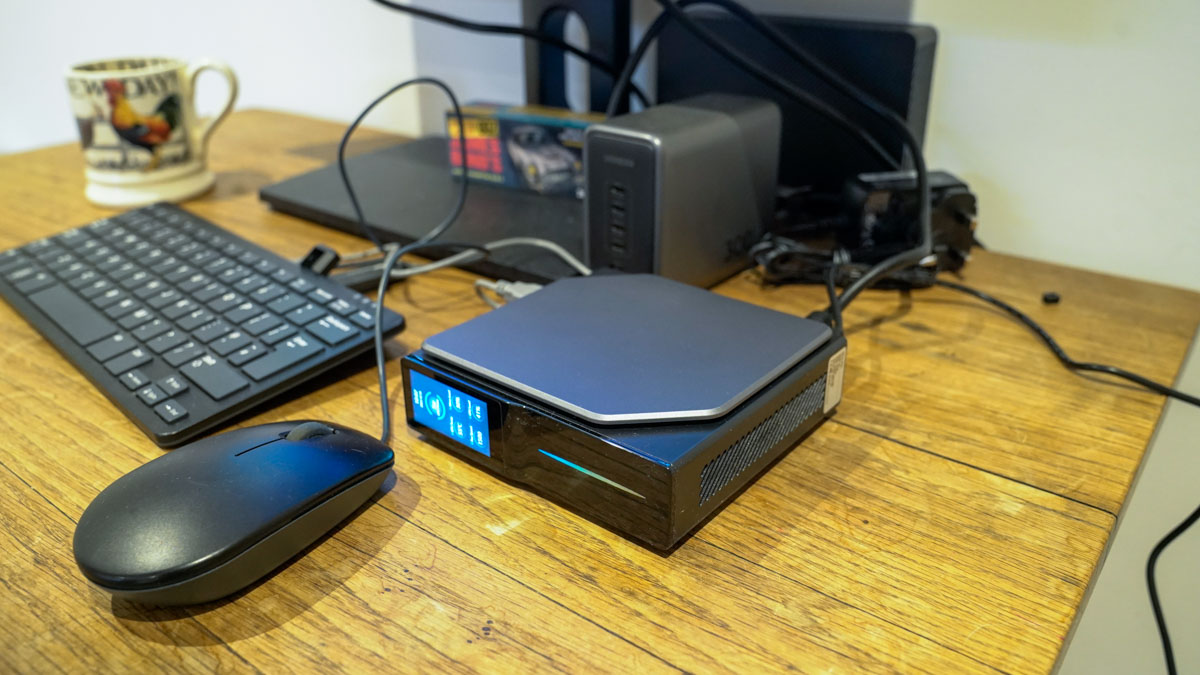
With its Intel 12th Alder Lake N95 processor, the Acemagic S1 offers a value-packed entry-level computing solution. Priced at an accessible $279 for the 512GB version, it's a budget-friendly option for those seeking a compact and versatile mini PC. If you want more storage, the 1TB version is available for a slight increase in price at $299, making it an attractive option if you need additional space without a significant price jump.
If you're seeking a bit more power, the Alder Lake N97 variant starts at $509, providing a higher performance option. The Acemagic S1 is available for purchase through the official website and Amazon.
- Score: 4/5
Acemagic S1: Design & build
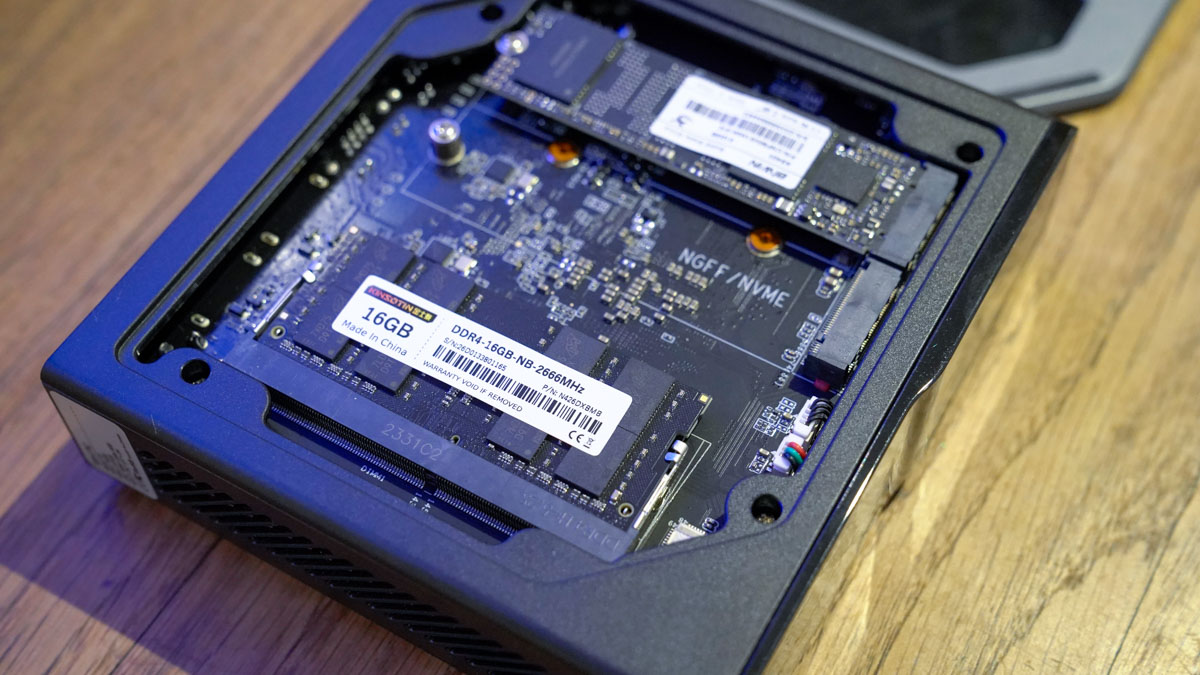
The S1 stands out in the entry-level market as it puts some design style into the standard box-like design and matches it with decent build quality. While the use of plastic in its construction is noticeable, it doesn't detract from its overall aesthetic appeal. The addition of an LED strip and that small LCD screen helps to improve the standard mini PC look, giving it a more premium feel than its price would suggest.
One of the key design features is its easy access to internal components. The quick-access panels for RAM and SSD upgrades are a convenient addition, especially considering the device's budget-friendly nature. The RAM slot supports single-channel memory, and the storage expansion options include one M.2 NVMe slot and an additional M.2 SATA slot.
The form factor is another highlight. Designed to fit seamlessly on a desktop or a shelf, it can be placed either horizontally or vertically, catering to different space constraints. The inclusion of a magnetic base in the package enhances its stability when positioned vertically, showcasing the attention to detail in its design.
Overall, the ACEMAGIC S1 combines practicality and style in its Build. Its compact size, coupled with the expandable hardware options and visually appealing details, make it an attractive choice for anyone looking for an affordable yet stylish mini PC. This design approach positions the machine as a standout option in the entry-level segment, offering a balance of aesthetics and functionality.
- Design: 4/5
Acemagic S1: Features
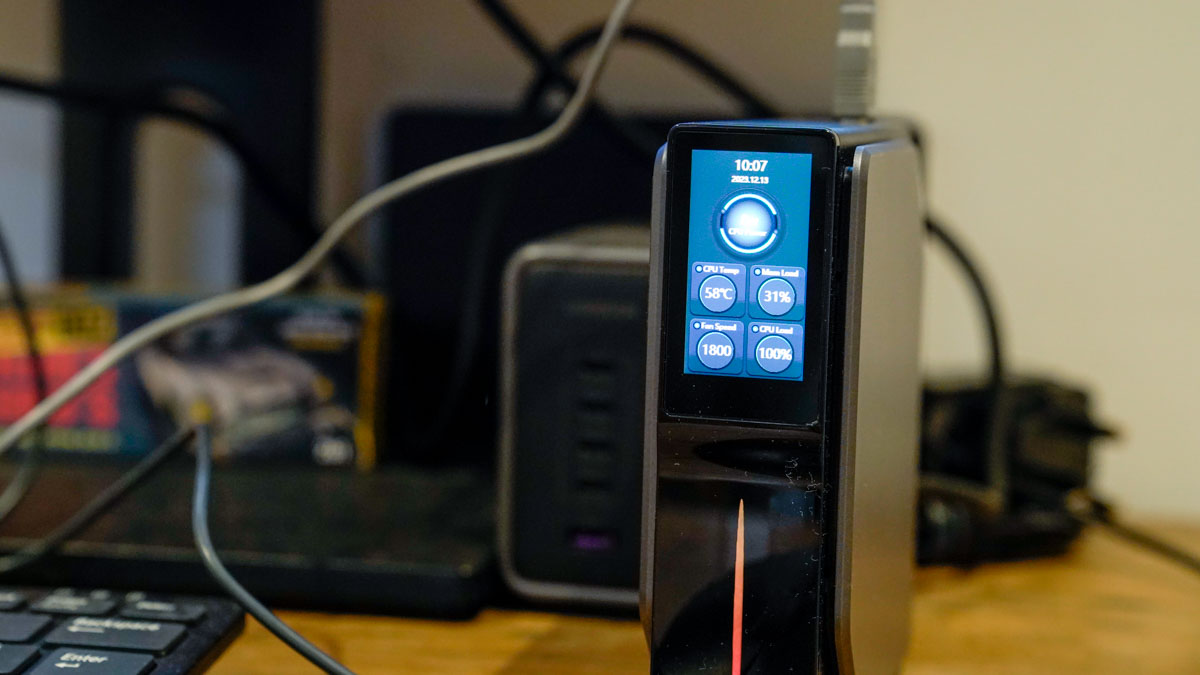
At the heart of the S1 is the Intel 12th Alder Lake N95 processor. This CPU offers competitive performance with its 4 cores and 6M cache, providing speeds that meet multitasking needs efficiently. This makes the S1 ideal for general office tasks light creative work, and as a home file storage server.
You just can't ignore its 1.9" TFT LCD screen, with a resolution of 170x320. This small yet functional display provides real-time information on CPU power, temperature, memory load, CPU load, and fan speed. This feature adds a level of interaction and monitoring capability typically not found in mini PCs for beginners, allowing you to keep an eye on the system's performance and health. A handy feature is you are using this as a home network storage solution.
In terms of connectivity, the S1 excels with dual Gigabit Ethernet, offering reliable and fast network connections. This feature is ideal if you want to use the S1 as a soft router, firewall, or file storage server in a home network. For storage, the S1 comes with a 16GB DDR and a 512GB SSD, providing ample space for most. The device also features an expandable SSD slot, allowing for easy upgrades to increase storage capacity as needed.
The S1 supports a dual-screen 4K display, enabling you to extend your workspace if using an application such as Photoshop, where a little more real estate can be beneficial. The S1 utilises copper pipes and a bottom ventilation design to help keep things cool and ensure the machine runs at low noise, even under full load. Lastly, the S1's Wi-Fi 6 and Bluetooth 5.2 ensure fast wireless connectivity, making it an excellent choice for everyday internet use and streaming.
- Features: 3.5/5
Acemagic S1: Performance
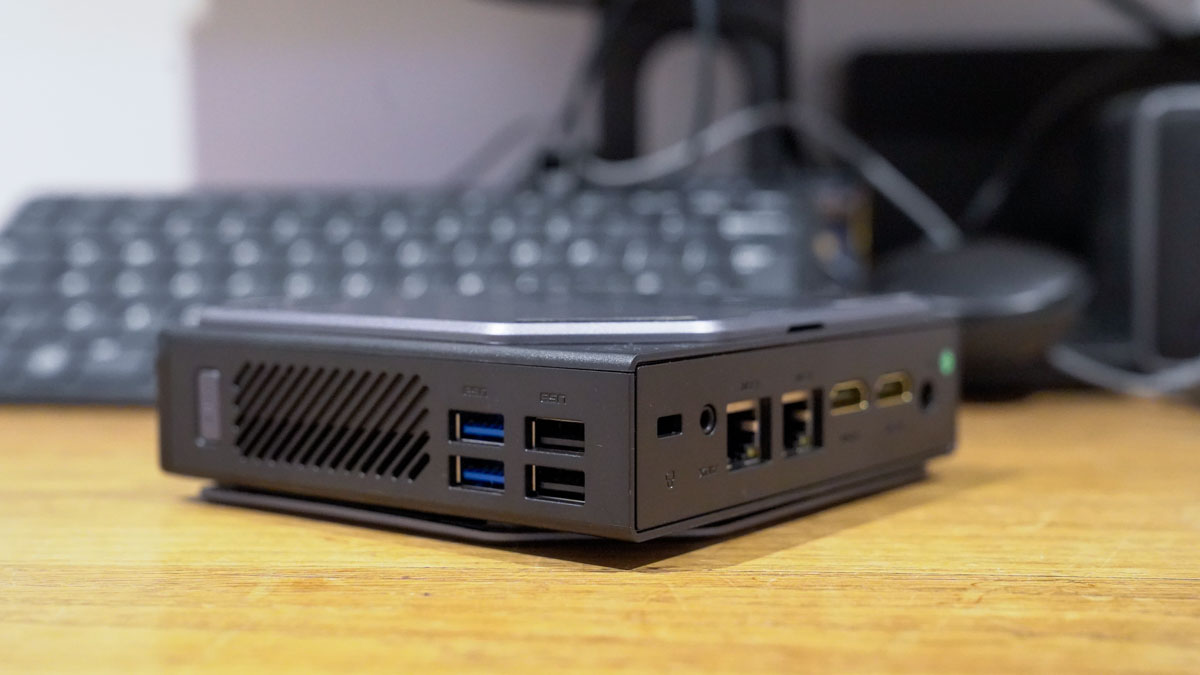
Crystal Disk Read: 535MB/s
Crystal Disk Write: 456MB/s
GeekBench CPU Single: 1126
GeekBench CPU Multi: 2514
GeekBench Compute: 316
PC Mark: 2836
CineBench CPU Multi: 893
CineBench CPU Single: 894
Fire Strike Overall: 967
Fire Strike Graphics: 1048
Fire Strike Physics: 5681
Fire Strike Combined: 343
Time Spy Overall: 335
Time Spy Graphics: 292
Time Spy CPU: 2035
Wild Life: 2532
Windows Experience: 6.3
The Acemagic S1 is equipped with the Intel 12th Alder Lake N95 processor, which provides a level of performance that is quite impressive for an entry-level mini PC. This PC can be used for everyday office work, as well as being a decent space-saving alternative to the best laptops for photo editing and other light creative work. You could even squeeze some gaming out of it, though with limitations due to its graphics capability.
In terms of general office work, the S1 excels. Applications within the Microsoft Office suite, such as Word, Excel, and PowerPoint, run smoothly. This is supported by the GeekBench CPU scores of 1126 (single-core) and 2514 (multi-core), which indicate good performance for tasks that require both single and multiple processing threads. The S1's ability to handle multitasking and day-to-day office activities is further confirmed by its PC Mark score of 2836, reflecting its competency in typical productivity scenarios.
When moving to creative tasks, using the best photo editors and the best video editing software (in this case, Photoshop and Premiere Pro), performance remains respectable. The CineBench scores of 893 (multi-core) and 894 (single-core) suggest it can handle light creative workloads.
However, it may not be the best fit for complex video editing or running the best 3D modeling software, where higher processing and graphics power are needed. If it's portability you want when getting seriously creative, we'd still choose the best video editing laptops and the best laptops for graphic design over this for any demanding tasks.
Gaming on the S1 is a mixed experience. The Intel UHD Graphics limits its capability to run the latest graphics-intensive games like Red Dead Redemption II or Cyberpunk 2077. This is evident in the Fire Strike (overall score: 967) and Time Spy (overall score: 335) results, which are on the lower end for gaming. However, it can competently handle older or less graphically demanding games, offering a decent gaming experience for casual or retro gaming enthusiasts.
Where the S1 really stands out is in its role within a home network. With dual Gigabit Ethernet ports and 512GB of SSD storage (expandable via an additional M.2 slot), it serves well as a file storage server or a soft router/firewall, providing reliable and fast data management and network security within a home environment. Its WiFi 6 also enhances its appeal as a home network hub.
The inclusion of a 1.9" TFT LCD screen on the S1 adds a unique touch, allowing you to monitor CPU power, temperature, memory load, CPU load, and fan speed at a glance. This feature doesn't necessarily add to the performance of the machine, but it is interesting!
The S1 is not suitable for the latest gaming titles or intensive creative work; its strength lies in its capability as a decent machine for the home office, networking, and storage solution. Its performance in benchmark tests, combined with its practical features and affordable price, make it a great option for anyone wanting a versatile, entry-level mini PC.
- Performance: 3/5
Should you buy the Acemagic S1?
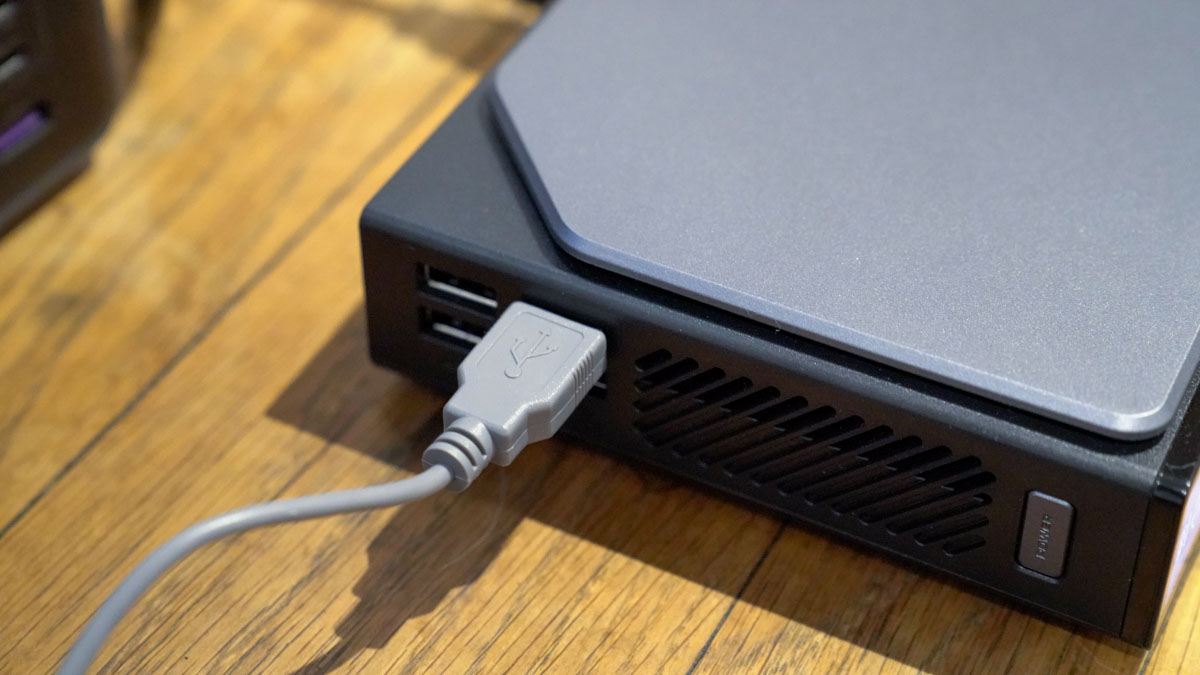
In our experience, there's an interesting balance of price, features, and performance here. It is an excellent choice if you want a versatile mini PC for everyday tasks, a soft router or a network storage solution.
The S1 handles general office applications and light creative tasks with ease, making it a reliable choice for home or small office setups. While its Intel UHD Graphics limits its ability to handle the latest, graphics-heavy games, it performs adequately with older or less demanding titles.
The standout feature of the S1 is its suitability as a home network hub. Its dual Gigabit Ethernet capability, combined with fast Wi-Fi and expandable storage, makes it ideal for use as a file storage server or for managing home network security. The additional touch of the 1.9" TFT LCD screen for real-time system monitoring is a unique and nice addition.
Priced at $279 for the 512GB version, the S1 offers great value, especially for those who prioritise network connectivity and storage options over raw computing power.
This is a solid choice for anyone looking for an affordable mini PC that offers more than just basic computing capabilities. Its strengths are in home networking and storage, coupled with its OK performance for everyday tasks and light gaming.







